This is a narrow alley opposite the Old Bailey with the latest reincarnation of a nearly 500-year-old pub sitting in the corner.
The alley first shows up as Bishopshead Court in the 1670s, as a long courtyard lined with small buildings. Not much changed other than the loss of its head when it became plain Bishop’s Court, until the 1870s when the western end was cut off for the construction of Holborn Viaduct Station.
The station was opened in 1874 by the London, Chatham and Dover Railway to alleviate increased usage of the nearby Ludgate Hill station. It was originally a through station, with services continuing through to Farringdon and King’s Cross. Passenger services through the tunnel ceased in 1916, and consequently, Holborn Viaduct became a terminal station. The short distance between itself and Ludgate Hill saw the latter being closed in 1929.
Holborn Viaduct station became less used through the 20th century, serving a few local commuting services around southeast London and Kent. The station became redundant with the creation of the Thameslink service in the late 1980s, and was closed in 1990.
The northern side of the alley was for a while a goods depot for the railway until the current building facing onto Old Baily, Britannia House was built in 1912. Designed by Arthur Usher of Yetts, Sturdy and Usher for the railway company, it’s in the, at the time very fashionable, Edwardian Baroque style with French influences.
The building though was just a shallow office frontage for the parcels depot behind. When the railway station closed, the parcels depot was redundant and the whole rear of the building was redeveloped as a modern office block at the turn of the century. Do look above the original front door at the sculptures. The statue of the woman on the left holds a wheel depicting rail travel and the woman on the right leans on an anchor depicting sea travel.
The southern side of the alley is notable for a large office block, with a pub in the corner.
The pub, the Magpie and Stump has been on this location since at least the 1550s, and was described in the 1718 pub guide, Vade Mecum for Malt-worms, as a “hangout for thieves, thieftakers and turnkeys”.
The location opposite the former Newgate prison is where a lot of public executions used to take place, and the pub would send a last pint of pale ale to the condemned man’s cell before his execution. On the day, the upper floors of the pub would be rented out to people wanting to have a good view of the execution.
The prison and public executions have long since departed, but the pub remains.
It nearly didn’t as the entire block was redeveloped in the late 1980s in a ‘post-modern’ style, but a condition of the planning approval was that the pub had to be granted a lease on the same corner spot that it had always occupied.
The old pub, with its peculiar tudor effect roof was demolished and now sits inside the office block.
Regrettably, in your correspondent’s opinion, in 2015 it was decided to gut the building (which was good), but also replace the frontage of the building (which was bad), replacing a distinctive architecture with a bland wall of stone and glass.
What was good though is that the pub was renamed. For some appalling reason, the Magpie and Stump had become the Firefly lounge bar in 2005, but when the building was refurbished, the pub was reopened as the Magpie and Stump once more, and a heritage sign added to the outside.
The alley itself is a narrow cleaned up passage with a pedestrian paved roadway that replaced a more interesting cobbled street that used to be here. What makes the passage more than just a back-of-office dead-end is that, for pedestrians at least, it’s not a dead end.
Down at the far end, the alley ends with steps, leading down to Fleet Passage, a privately owned route that was added when the Thameslink station was built on the site.
For that reason, the alley is surprisingly busy, as it’s a convenient shortcut.

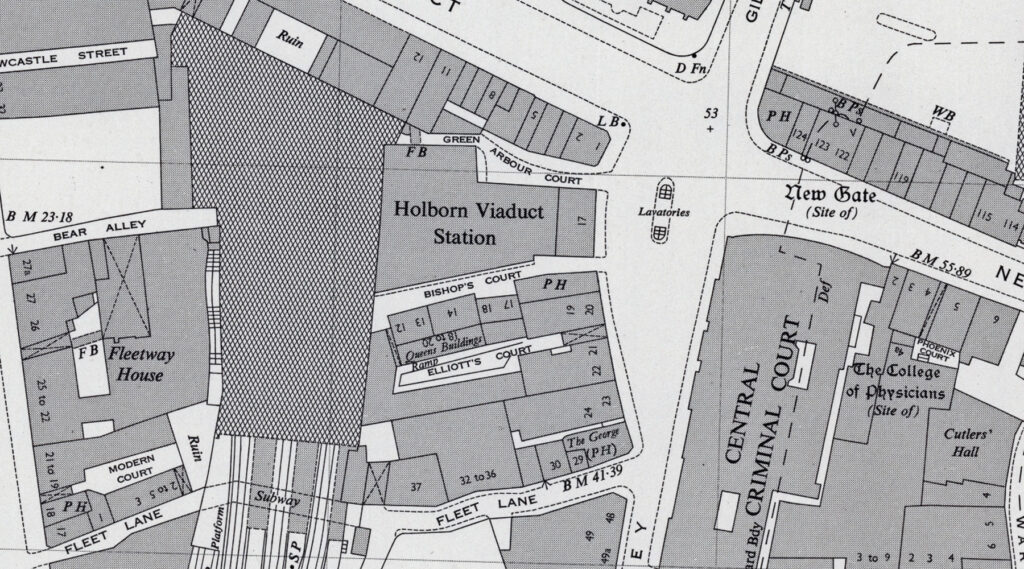
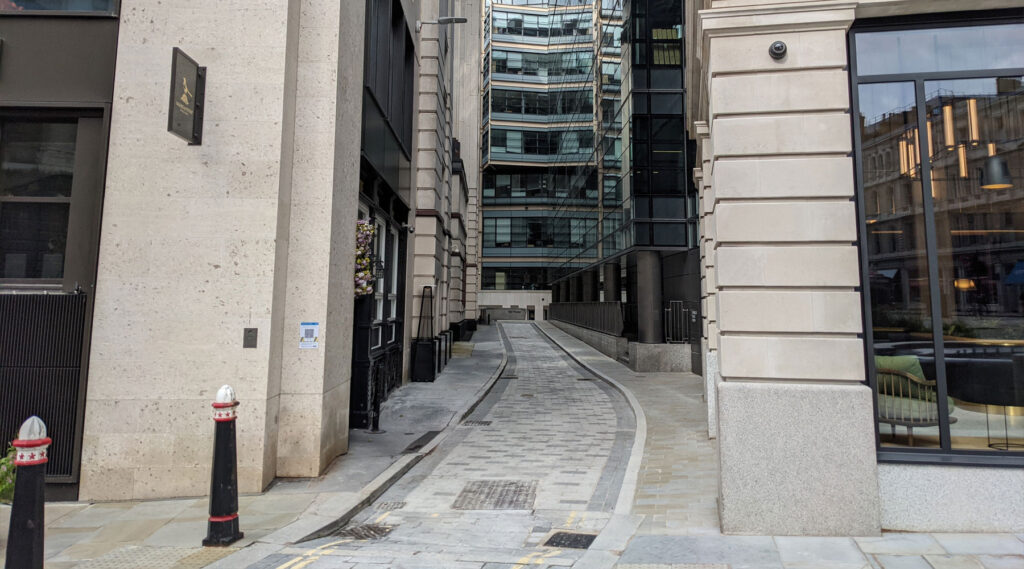
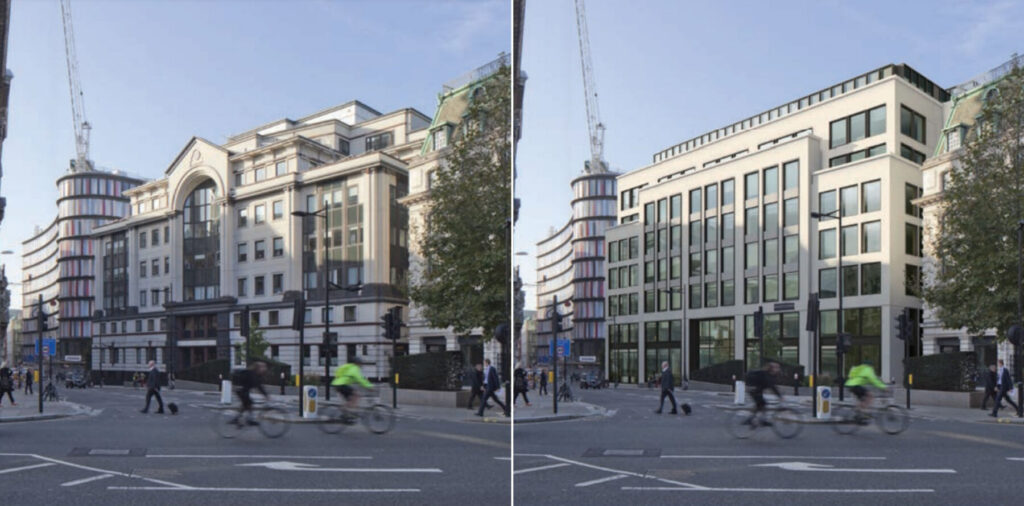
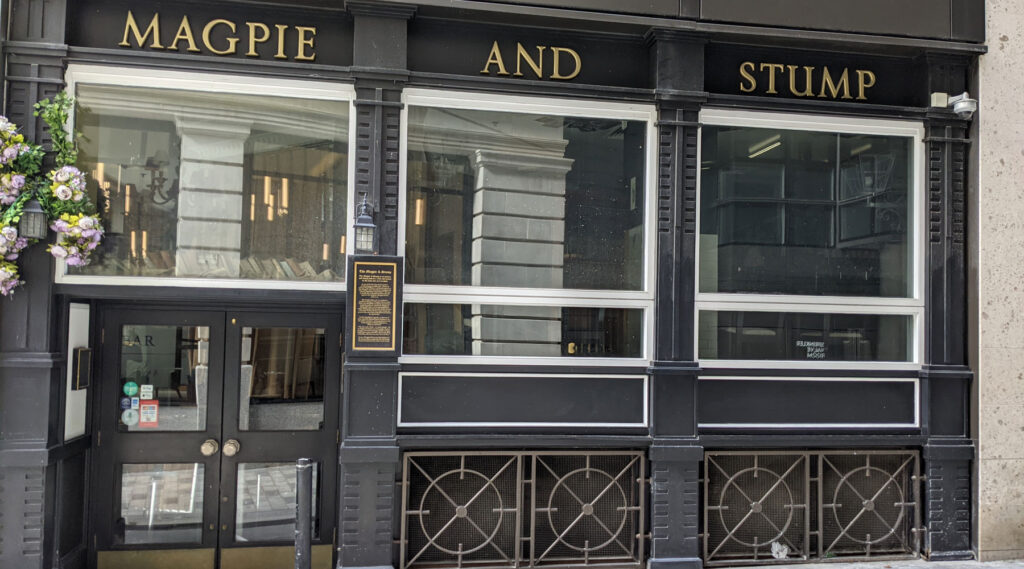
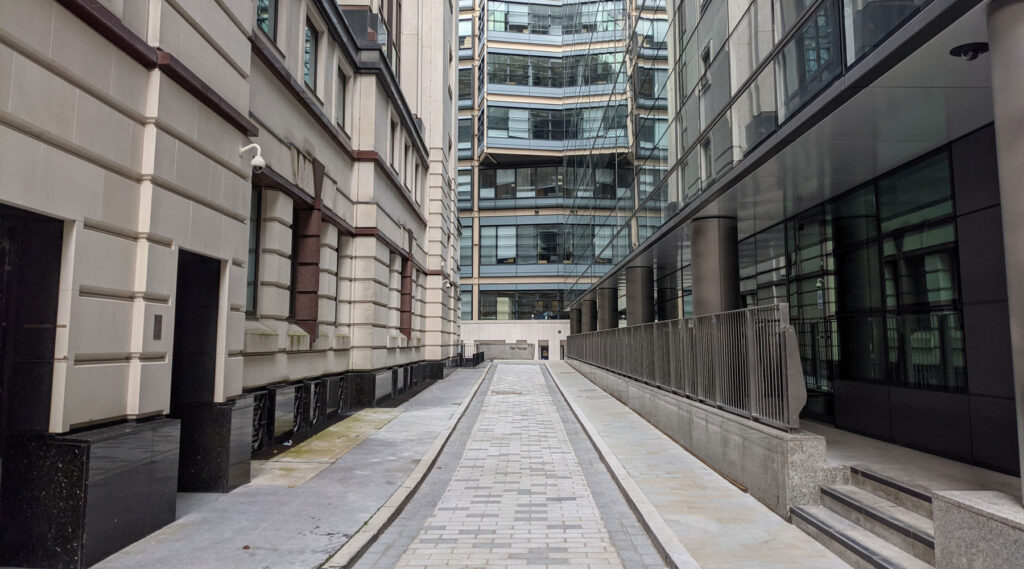






I worked in that building for a time a few years ago. I’d no idea it originally had a PoMo exterior. I’m torn between the old, ugly, but at least characterful frontage vs. the new, completely uninspiring, but at least not actively ugly one.
The interior is a dreadful space. A great lesson in how to make a central atrium still feel choking and restrictive. (plus I had to work in the basement, so I was never going to like the place)
I thought that alley sounded familiar! I worked on the refurbishment of that office in 2018, it was quite a challenging project. We had many a Friday afternoon site meeting in the Magpie and Stump!